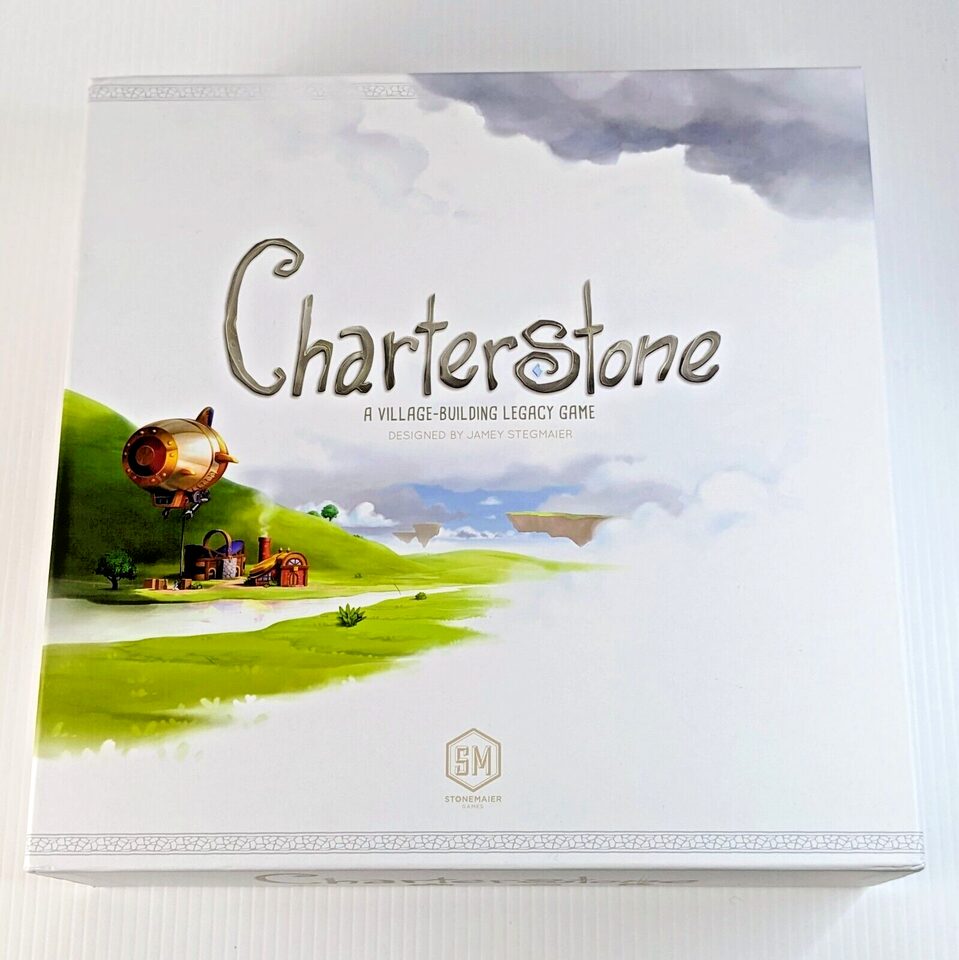Charterstone (2017)
Charterstone
Charterstone is a board game for 1-6 players designed by Jamey Stegmaier and released by Stonemaier Games in 2017. It is a competitive legacy game where players work together over a twelve-game campaign to build a village while simultaneously competing to win each game and ultimately win the campaign. The game board and rules develop uniquely depending on the choices made by the players, so that by the end of a twelve-game campaign, each playthrough of Charterstone develops into a different game.
Why is Charterstone Popular?
Charterstone is a popular game because of its unique Gameplay Mechanics of Charterstone and the legacy aspect of the game. The game is designed as a “legacy board game,” meaning that each game played influences, or leaves a legacy, for subsequent games within a larger campaign. The game’s components, including the game board and rules, develop uniquely depending on the choices made by the players, making each playthrough of Charterstone a different game.
Game Components of Charterstone
How To Setup Charterstone
To set up Charterstone, start by placing the game board in the center of the playing area. Each player selects a charter box and places it on the designated area of the board. The rulebook is initially incomplete, with only basic rules provided. Players begin by drawing the first guidepost card, which initiates the story and explains the initial objectives. The first building cards are distributed, and players start constructing their first buildings in their charter areas.
Gameplay Mechanics and Game Objective
Player Experience
Charterstone offers a dynamic and evolving experience as players build and customize their village over 12 games. The game starts simple but gradually introduces new rules, buildings, and challenges, keeping the gameplay engaging and fresh. Players enjoy the thrill of discovery as new elements are unlocked, and the game’s progress tracker moves forward. The ability to visit and use buildings in other players’ charter areas adds a layer of interaction and strategy.
Pros
Cons
Personal Thoughts on Charterstone
Charterstone is ideal for players who enjoy legacy games, worker placement mechanics, and campaign-style gameplay. It is suited for those who appreciate gradual rule introduction and the excitement of discovering new elements as the game progresses. While it can be played with 1-6 players, it remains enjoyable even with just two players. Charterstone is a great choice for anyone looking for a medium-weight game with high-quality components and engaging, evolving gameplay. However, players who prefer straightforward, simple rules may find the increasing complexity and rule additions challenging.
We are supported by our audience. When you purchase through links on our site, we may earn an affiliate commission, at no extra cost for you. Learn more.

